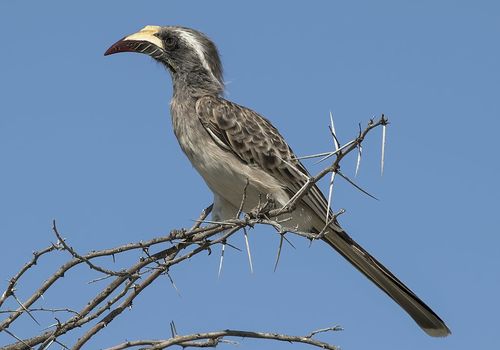
African grey hornbill
Tockus nasutusAfrican grey hornbill
Introduction: The African grey hornbill (Tockus nasutus) favours a wide range of wooded savannah and woodland habitat which includes tall trees and the arid thornveld of Namibia. They can also be observed in wooded gardens and certain woodlands that enjoy dense foliage for foraging and nest holing. Predators include Ayres's hawk eagle and the Lanner falcon.
Distribution: From Windhoek northwards with dense populations in the north-western regions from Rundu extending east through the Caprivi to Victoria Falls.
Diet: Small animals and some items of fruit. Rodents, tree frogs, nestlings and birds' eggs. Insects include grasshoppers, beetles and caterpillars.
Description: Dark grey head and neck, black bill with pointed casque. The Greek word nasutus means nose and refers to the particularly long bill of this small to medium-sized hornbill.
Breeding: 3 or 4 eggs are laid after the first good rains between October and March. The incubation period is 24 to 26 days.
Size: 43 to 48cm. Weight: 165g.
Klein Windhoek

